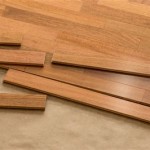Vinyl flooring is a popular choice for many homeowners due to its affordability, durability, and variety of color and texture options. Applying vinyl flooring is a straightforward process if you have the right tools and materials. In this article, we’ll provide you with an overview of the steps needed to successfully apply vinyl flooring in your home.
Preparing the Subfloor
The first step in applying vinyl flooring is to prepare the subfloor. The subfloor should be clean, dry, and level. If the subfloor is uneven, you may need to use a self-leveling compound to even out the surface. You should also inspect the subfloor for any existing damage, such as scratches or holes, and repair them before proceeding.
Choosing the Flooring
Once the subfloor is ready, you can begin selecting the vinyl flooring that best suits your needs. Vinyl flooring comes in a variety of colors and textures, so you should take your time to find the one that’s perfect for your home. Make sure to measure the area you’re covering and buy enough flooring to complete the project.
Laying the Flooring
Once you’ve selected your flooring, you can begin laying it down. Start by laying the vinyl sheets in the opposite corner of the room from the door. Use a straightedge and a utility knife to trim the vinyl sheets to fit the room. Make sure to leave a gap of at least 1/4 of an inch between the sheets to allow for expansion.
Applying the Adhesive
Next, you’ll need to apply the adhesive to the subfloor. Make sure to use a vinyl-specific adhesive for the best results. Start by spreading the adhesive with a notched trowel, starting from the corner of the room and working your way toward the door. Once the adhesive has been applied, you can begin laying down the vinyl sheets.
Securing the Flooring
Once the vinyl sheets are in place, you’ll need to secure them to the subfloor. This can be done with a roller, which will help ensure a tight bond between the flooring and the adhesive. Start at the corner of the room and slowly roll the roller in a back-and-forth motion until you reach the door.
Finishing the Floor
Finally, you’ll need to finish the floor by sealing the edges. This will help to protect the vinyl flooring and ensure a long-lasting finish. You can use a vinyl sealant or a silicone-based sealant, depending on the type of vinyl flooring you have. Once the sealant has been applied, your vinyl flooring is ready to use!

:max_bytes(150000):strip_icc()/easy-install-plank-vinyl-flooring-1822808-02-19a3b80cd59943938a401560203706f3.jpg)













Related Posts








